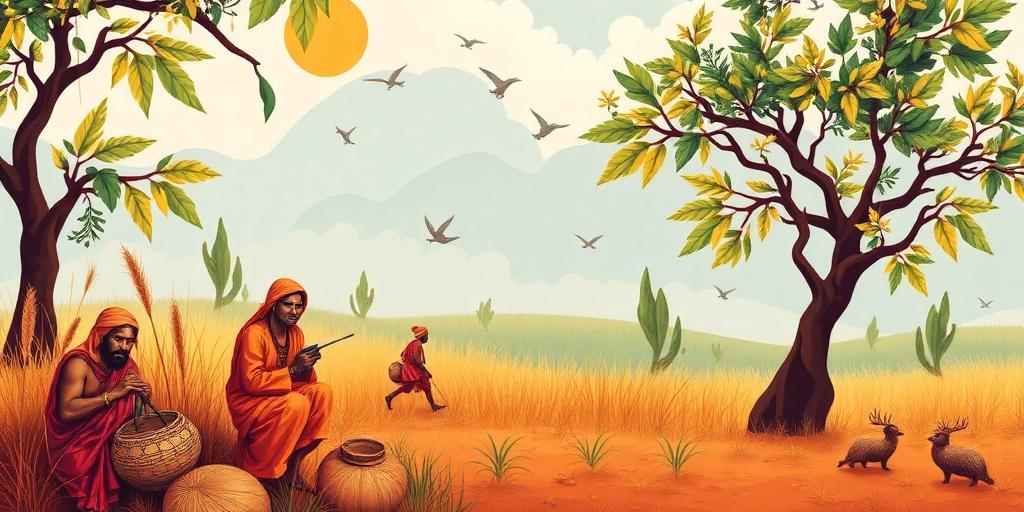Sarkari Yojana for Tribal Welfare and Development in 2025
Introduction
In 2025, the Indian government continues its commitment to the welfare and development of tribal communities through various Sarkari Yojana (Government Schemes). These initiatives aim to address socio-economic disparities, promote education, healthcare, and ensure the overall empowerment of tribal populations. This article provides an in-depth analysis of the key schemes and their impact on tribal welfare and development.
Key Schemes and Initiatives
The government has launched several schemes tailored to the specific needs of tribal communities. These include:
- Pradhan Mantri Janjatiya Vikas Yojana (PMJVY): A comprehensive scheme focused on the integrated development of tribal villages. It includes provisions for infrastructure development, healthcare facilities, educational institutions, and livelihood opportunities.
- Eklavya Model Residential Schools (EMRS): These schools provide quality education to tribal children, focusing on holistic development and preparing them for higher education and competitive exams. By 2025, the government aims to establish EMRS in every block with a significant tribal population.
- Van Dhan Yojana: This scheme promotes value addition to minor forest produce (MFP) collected by tribal communities. It supports the establishment of Van Dhan Vikas Kendras (VDVKs), which serve as centers for processing, packaging, and marketing MFP, thereby enhancing the income of tribal families.
- Tribal Sub-Plan (TSP): A dedicated fund allocation for tribal welfare activities within the state and central government budgets. The TSP ensures that a specific percentage of the total budget is earmarked for tribal development programs.
- National Health Mission (NHM): Special provisions under NHM address the healthcare needs of tribal populations, focusing on reducing maternal and infant mortality rates, improving access to healthcare services, and controlling communicable diseases.
Implementation and Monitoring
The effective implementation of these schemes requires a robust monitoring and evaluation framework. The government has established mechanisms at the national, state, and district levels to oversee the progress of tribal welfare programs. These mechanisms include:
- Regular audits and impact assessments to evaluate the effectiveness of the schemes.
- Community participation and involvement of tribal leaders in the planning and implementation process.
- Use of technology and data analytics to track key performance indicators and identify areas for improvement.
- Convergence of different schemes and programs to maximize their impact on tribal communities.
Challenges and Way Forward
Despite the government's efforts, several challenges persist in achieving the desired outcomes for tribal welfare and development. These include:
- Lack of awareness and access to information about the schemes among tribal communities.
- Inadequate infrastructure and connectivity in remote tribal areas.
- Land alienation and displacement of tribal populations due to developmental projects.
- Social discrimination and exclusion faced by tribal communities.
- Need for capacity building and skill development among tribal youth.
To address these challenges, the government needs to adopt a multi-pronged approach that includes:
- Strengthening awareness campaigns and outreach programs to disseminate information about the schemes.
- Investing in infrastructure development and improving connectivity in tribal areas.
- Ensuring fair compensation and rehabilitation for displaced tribal populations.
- Promoting social inclusion and empowerment of tribal communities.
- Providing quality education and skill development opportunities to tribal youth.
Conclusion
The Sarkari Yojana for tribal welfare and development in 2025 reflect the government's commitment to addressing the socio-economic disparities faced by tribal communities. Effective implementation, monitoring, and addressing the existing challenges are crucial for achieving the desired outcomes and ensuring the holistic development and empowerment of tribal populations. Continued efforts and collaboration between the government, civil society organizations, and tribal communities themselves are essential for building a more inclusive and equitable society.









